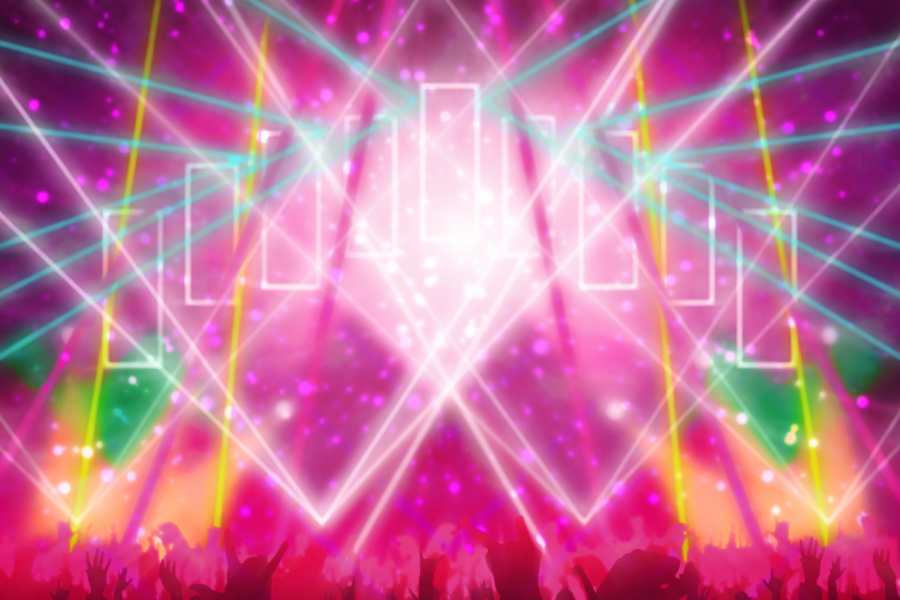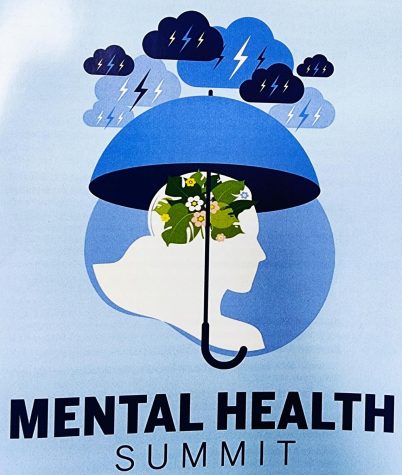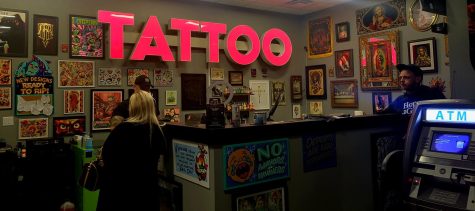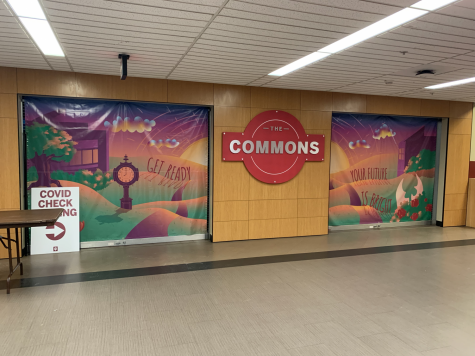Going Beyond the Drug-Induced EDM Culture
Behind all the statistics of drug usage at music festivals lies a culture with an interesting path fandom
Behind all the statistics of drug usage at music festivals lies a culture with an interesting path fandom. Photo Illustration by Louis Herlihy
While current moods often influence what music a person may listen to, there is a new wave that has left people across the world raving.
Electronic dance music (EDM) made its way from Jamaica and mainstream Europe to the United States and around the rest of the world, creating some of music’s most passionate fans while also developing the reputation of a drug-induced dance culture.
“The music is upbeat and it’s just a fun time,” Jordan Parrott, a senior business marketing, management and human resources major said. “It’s a good workout too.”
From head-banging to mosh-pitting, EDM fans experience music in waves of bass buildups and drops in a mix of songs across all genres of music.
Major DJs such as Skrillex, Diplo, Flume and the Chainsmokers have opened doors for thousands in the “club music” world. By Dec. 2017, Forbes’s list of highest-paid DJs amassed nearly $300 million thanks to sold out tours and six-figure fees.
Some of the most famous DJs come from around the world with European influence, though Louisville is no stranger to the wave that has taken charge in the music industry.
“The thing that’s most different with [EDM] compared to rap or any other genre is really just how liberal these guys can be with their music,” David Le, a music producer who works in various studios in Louisville, including 400 Records, said.
Le has worked with hundreds of artists from rap to jazz, yet he says there is something ‘different’ about production of EDM-specific music.
“There isn’t a traditional sound,” said Le. “There aren’t any rules these guys are breaking because there never were any rules with music in the first place.”
With no traditional sound or rulebook, producers such as Le have developed a sound of their own, one that can always be traced to the roots of electronic dance music — Jamaican dub.
From Jamaica to Europe
Though brought into light by mainstream European music outlets, EDM traces to the early 1970s movement throughout Jamaica known as “dub.”
“Think about Jamaican music in the 70s. Anyone who knows the slightest bit about reggae is going to think about Bob Marley or Peter Tosh,” music historian Michael Hayes said. “What people who weren’t in the music scene down there fail to realize is how influential that entire culture was. I’m not sure underground dub musicians realized it too.”
Once developed on the streets of Kingston, Jamaica, with primitive electronic sound equipment and dub pioneers, it wouldn’t take more than a decade for producers in Britain to jump on the bandwagon.
Often playing at illegal underground clubs, dub began to form a sound of its own on the other side of the Atlantic Ocean.
“So by the time the 80s came around, some of these European bands like Kraftwerk or even U2 put out music we started to call ‘techno,’” Hayes said.
Techno music had hit the streets in the United States the same time mainstream hardcore drugs such as LSD, MDMA (ecstasy) and cocaine had grasped the nation.
Branching from Techno, came other genres of EDM, but with it stuck a reputation of drug use. With the development of music festivals, EDM has gone from an underground stage to a simultaneous experience for hundreds of thousands.
Demographics of the Culture
As the evolution of EDM subgenres progress as rapidly as ever, one thing remains the same — its demographic.
Research conducted by Nielsen Media Research found that while subgenres such as dubstep and house music have taken over the EDM wave, the majority of its listeners remain 18 to 24-year-olds, 55 percent male and 45 percent female.
Furthermore, nearly 48 percent of its listeners have had some college education or are recent graduates and 27 percent have an average income of $25,000 to $49,000.
“There just isn’t an association with [EDM] like other genres of music,” Le said. “Like a stereotypical classical music fan is probably a little different than a rap fan, but some of these [EDM] fans come from anywhere with any background.”
As the generation of dubstep listeners grows, so do musical festivals across the world, some of which are EDM-specific.
Among the EDM festivals are Ultra Music Festival in Miami, Florida, Electric Forest in Rothbury, Michigan and Voodoo Festival in New Orleans.
“I saw Carnage in Indianapolis, Electric Forest and went to Forecastle,” Parrott said. “And the environment is amazing.”
Behind the reputation for drug misuse lies a unique music culture unlike any other. Music festivals featuring some of music’s most passionate fans can be quite costly, reaching hundreds of dollars for weekend passes.
For local electronic dance music fans seeking an opportunity for an unforgettable experience, the well-known duo Odesza will be performing at Iroquois Amphitheater in Louisville on May 11. Tickets are now on sale starting at $61.
Editors’ note: A previous version of this story included an error in reference to an employment affiliation of a source. We regret this error and have corrected it.






